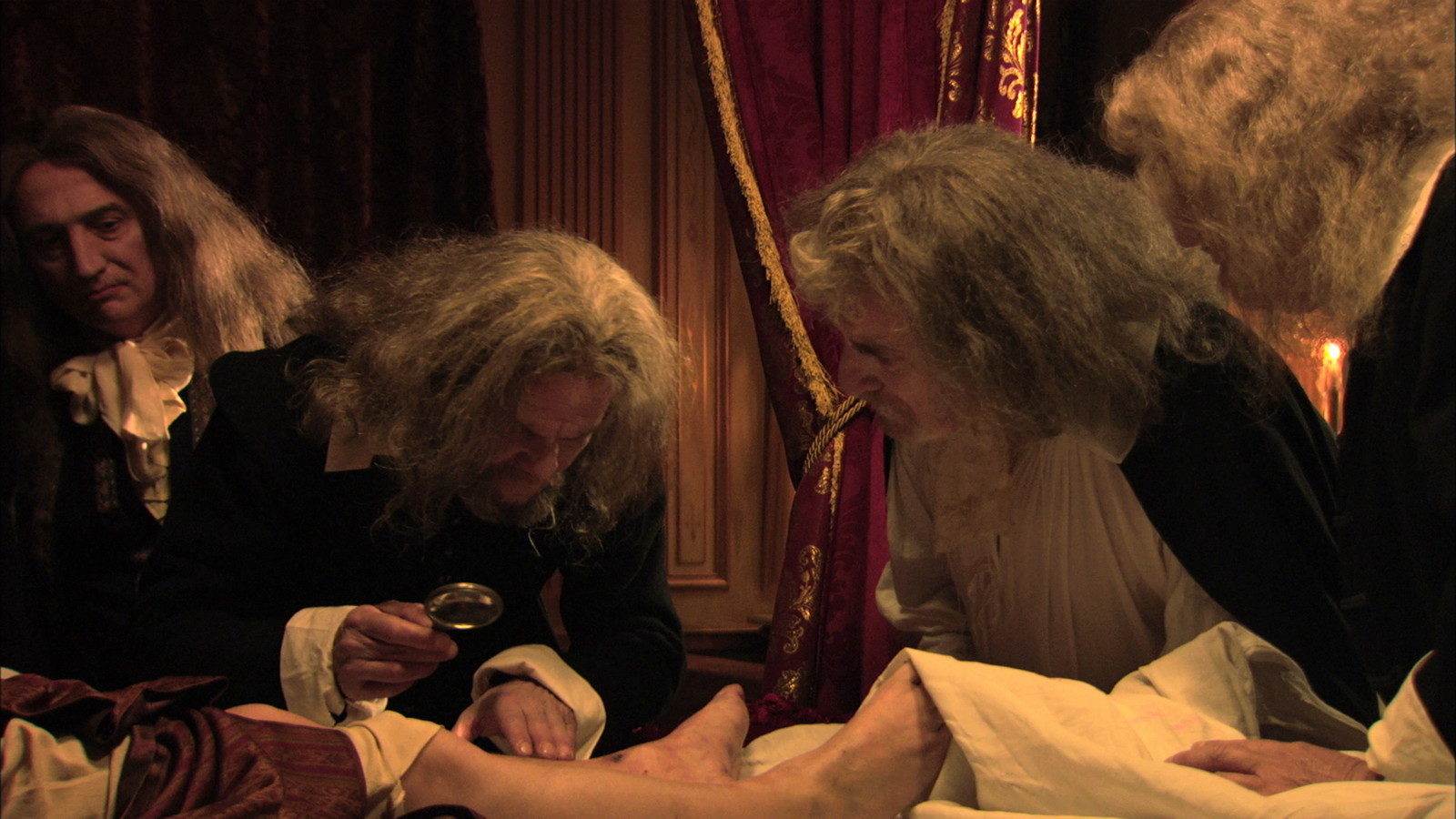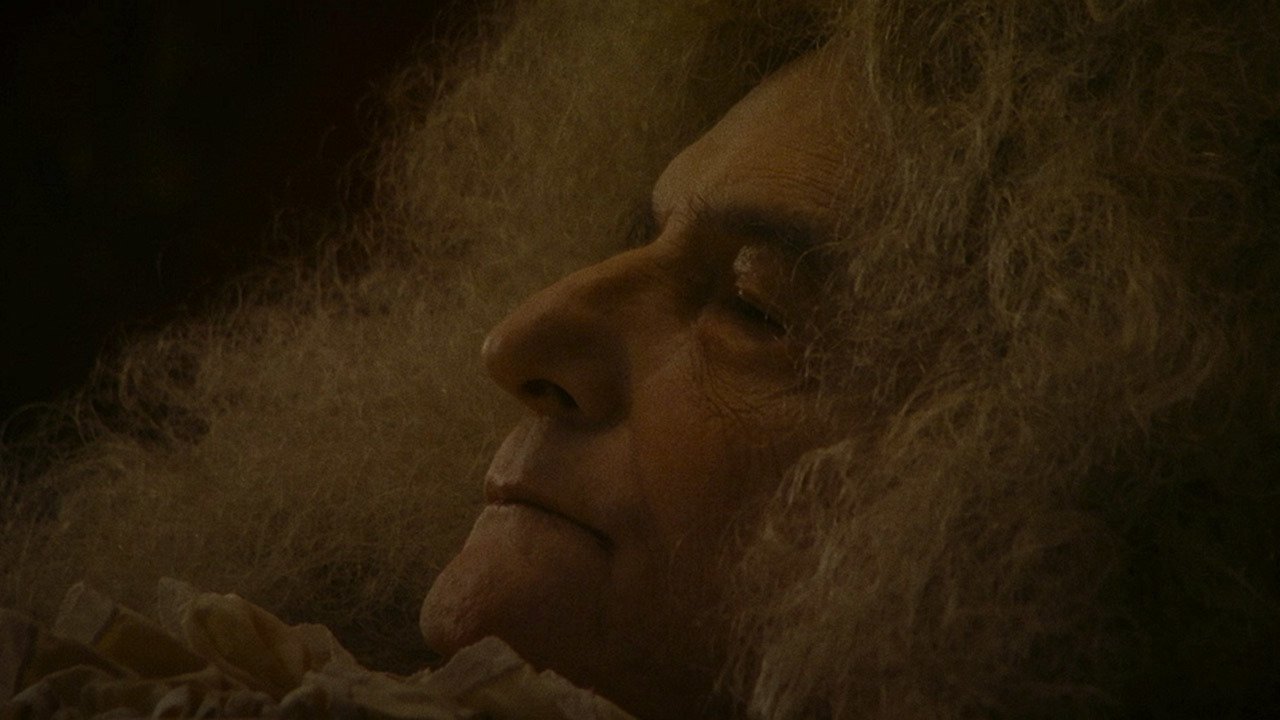We first see Jean-Pierre Leaud as Louis XIV in a wheelchair, being rolled through nature by his assistants. It’s the last time The Death of Louis XIV brings us outside. The rest of the film takes place in cramped quarters, mostly around the king’s bed, as he slowly recedes from life.
It’s a challenging movie, and one whose plot is wholly summed up in the title. Exemplars of the slow movie form, like Lav Diaz and Corneliu Porumboiu, still make some use of traditional plot turns, moments where the atmosphere in the room seems to change. They make slow films, but slow still implies some amount of motion. Here, Albert Serra just brings us through every moment in the king’s deterioration, until the final moment of his death, a moment that has been so delayed and postponed that even that leaves us without a feeling of change.
 The intensely cramped spaces shape the brilliant camerawork. Historical movies are defined by how they use masses, great groups of people reduced to form by their relationship with absolute authority. The most important camera relationship to bring about that effect is the bird’s eye view, which allows us to take it all in at once, to understand the scale. The bird’s eye view is a democratic alternative to placing the camera in the place of the monarch (or general or tyrant or…). Spectacle has, for most of human history, been organized specifically in relation to the particular place from which it can be wholly taken in, like the king’s seat at the theater.
The intensely cramped spaces shape the brilliant camerawork. Historical movies are defined by how they use masses, great groups of people reduced to form by their relationship with absolute authority. The most important camera relationship to bring about that effect is the bird’s eye view, which allows us to take it all in at once, to understand the scale. The bird’s eye view is a democratic alternative to placing the camera in the place of the monarch (or general or tyrant or…). Spectacle has, for most of human history, been organized specifically in relation to the particular place from which it can be wholly taken in, like the king’s seat at the theater.
Bird’s eye views separate the viewer from the place of power; they allow us to see the relationship in front of us (the masses of people organized around the kingly viewer) and a form of the spectacle (masses of people organized, regardless of shape). It’s a democratic move, but one that Albert Serra avoids.
We spend most of Louis XIV roughly at neck level, near the king but off to one side, seeing almost upsettingly close shots of his absurd wigs and desiccating body. Scenes operate in relationship to him—people talk to him, listen to him, give him food or water, examine his body—and we are both too close and too far to observe it either wholly subjectively or objectively. We are instead simply one more observer in a room full of them.
his absurd wigs and desiccating body. Scenes operate in relationship to him—people talk to him, listen to him, give him food or water, examine his body—and we are both too close and too far to observe it either wholly subjectively or objectively. We are instead simply one more observer in a room full of them.
As Louis shrinks into himself (Leaud’s performance is incredible), there is a hole in the narrative space. There is no clear relationship of power, and the doctors have trouble deciding among themselves what to do. It’s an incredible narrative way of showing what the end of the longest reign in early modern history meant.
It’s an incredible example of how slow cinema can work; it’s a wonderfully unique historical film; it’s, honestly, barely a movie. Give it a look.

